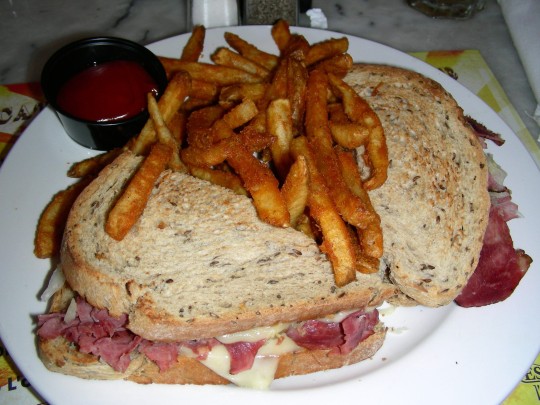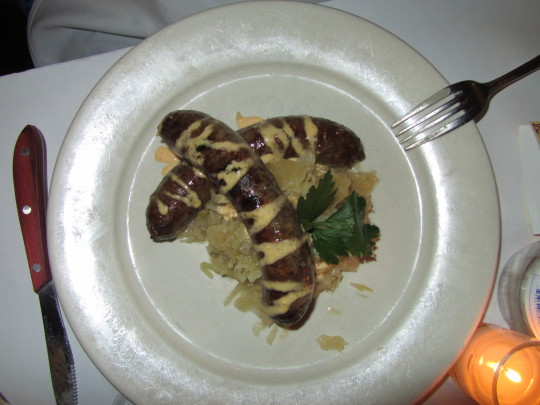#water jar manufacturer
Explore tagged Tumblr posts
Text
Thermos Bottle Manufacturers: The Key to Convenient Hydration Solutions
Insulated water bottles are now the biggest need of the hour in today's rat race, and it is the designed one that makes all the difference. In these times of increased health-consciousness and being responsible to nature, demand for Insulated Water Bottles has risen extremely with time. This is why some have taken the lead to manufacture a perfect thermos bottle and also various water bottle production companies with innovative, reliable, and efficient hydration solutions.

A Thermos Bottle Manufacturers plays a very important role in providing the right product which helps to keep beverages at the temperature desired for much longer periods. There are thermos bottles that take up the task of keeping hot liquids warm and cold liquids cool. These bottles normally comprise double-wall insulation that prevents any form of heat transfer that would make your drink lose its proper temperature for hours. Whether you are heading off to work, the gym, or taking a hike into the great outdoors, a thermos bottle means that your beverage will stay fresh as when you first poured it.
A very popular item from Thermos Bottle Manufacturers is the insulated water bottle. Anyone in the mood of maintaining the hot coffee for your morning drive, then an ice-cold water is there for that summer hike- all insulated by the advanced technological innovations. It has the state-of-the art technology for effective insulation and may be used outdoors and indoors alike. They vary in size and design. They are lightweight, rugged, and leak proof, ideal for a good number of exercises ranging from daily travel to outdoor activity.
When finding a reliable Water Bottle Manufacturer, choose a brand that prioritizes quality and safety. Some of the best producers are using stainless steel or BPA-free plastics to ensure the bottle is safe for drinking and not bad for the environment. Among the most popular materials in use today, stainless steel stands out because it is rust-free and, therefore, ideal for storing liquids at a particular temperature for much longer. Most producers also consider the aesthetics of the bottles, which become sleek, ergonomic, and easy to use and carry.
Thermos bottle companies and water bottle companies are meeting the increasing demand for sustainable, practical hydration solutions. These companies offer high-quality insulated water bottles that help the consumer stay hydrated while reducing carbon footprint. Eco-friendly materials, durability, and retention of temperature are some of the emphasis points on Insulated Water Bottles, making it an essential accessory for modern living.
In a nutshell, it is the insulated water bottle manufacturer that produces insulated water bottles and hence a Water Bottle Manufacturer that goes straight to the heart of provision of effective hydration solutions for the consumers of today. This way, investing in good water bottles--be it in such sustainable, temperature-retaining bottles--lets you hydrate and give back to nature at the same time. They're all designed to cater to every one of your hydration needs-from thermos bottles to carry hot drinks to insulated water bottles for your chilled beverages.
#water bottle manufacturer#thermos bottle manufacturers#water camper#hot case lunch box#casserole lunch box#water jar manufacturer#insulated water bottle#water camper manufacturing#best hot case lunch box#insulated water jug#hot pot lunch box
0 notes
Text
Fluoride Removal Plant: Buy 2000 LPH Fluoride Removal Plant from IDEAS ENGINEERING WORKS at best prices 20ltr jar wash machine.
#2000 LPH Fluoride Removal Plant Manufacturer#20ltr jar wash machine#IDEAS ENGINEERING WORKS#Water bottling plant manufacturer
0 notes
Note
As someone from Alola, I've always wondered: why do TMs made in Paldea break after use? Like... are the TMs over there just made worse, or what?
it's because our TMs can be manufactured using materials you find outside! we have TM machines stationed all over the place where you can turn in some LP (gained from interacting with terastal energy or by turning in excess materials) and the required materials to print a copy of a move. they're single use because making them multi-use would be prohibitively expensive. consider how much it costs to buy a TM in alola. depending on the move, you're looking at a ₽10,000 to ₽50,000 cost. that's more than most trainers can afford on the regular! if you're a starting trainer looking to diversify your movesets with TMs, that may be beyond your resources. the TM machines allow trainers of any skill and experience level to have access to expanded move choices.
of course, our system does have its hiccups as well. i'm not a fan of the LP system, because i think it does encourage trainers to engage in potentially dangerous behavior for the sake of money (LP can be used in stores as well); i also don't like that there's a currency controlled by the league itself. there's also the matter that collecting the materials can also be difficult or dangerous, depending on the move. while pokemon will naturally shed the materials you need (go to any body of water in the eastern part of south province and you'll get jarfuls of wooper slime in minutes), sometimes you'll end up having to battle against them. plus, depending on your physical ability, you may not be able to travel to where the pokemon whose materials you need are found. there's a pretty robust material trade community online, but some people have brought up the potential of poaching.
every region has their way of handling TM production, and i don't think any one way is perfect for everyone. there's pros and cons to both single use and multi-use TMs, so it's more important to consider what your particular needs as a trainer are!
104 notes
·
View notes
Text

فخارة العدس / Fukharat l'adas (Palestinian clay-pot lentils)
The name of this dish comes from "فَخَّار" ("fakhar"), meaning "pottery," and "عَدَس" ("'adas"), meaning "lentils." It is traditionally cooked in a قدرة ("qedra," clay pot) made from clay refined from local soil and shaped in family-owned pottery workshops. This type of pot is also used to make a lamb and rice dish of the same name commonly eaten in Gaza and Hebron. The qedra is filled with the cooking ingredients, sealed with a flour-water paste or with aluminum foil, and placed in a wood-fired oven—or buried in an earth oven—to cook for several hours, or even overnight.
This simple dish cooks red lentils with yellow onion, olive oil, and cumin to produce a smooth, earthy stew; additional olive oil and fresh lemon juice squeezed on after cooking add freshness and a tart lift, and شطة (shatta, red chili paste) is spooned in for heat.
As of 2019, the number of families producing qedra in Gaza had decreased from 40 or 50 to 3 or 4, according to workshop owner Sabri Attallah. The Israeli blockade which began in 2007 closed off foreign markets for Palestinian qedras, while cheaper, metal imports cut in on the local market. When the pots are exported to Israel, the multiple checkpoints and mandatory searches between Gaza and Israel cause many of them to break. The compression of Palestinians into small areas by Israeli government and settlers also spells problems for the qedra industry, as the smoke caused by firing pots reduces air quality for nearby residents. Many consider pottery-making to be both an integral part of Palestinian identity, and to be dying out: thus the targeting of Palestinians' economic self-determination targets cuisine and culture as well.
Today, Israeli weapons threaten Palestinian existence. Palestine Action has called for bail fund donations to aid in their storming, occupying, shutting down, and dismantling of factories and offices owned by Israeli arms manufacturer Elbit Systems.
For the lentils:
1 cup split red lentils, rinsed
1 yellow onion, chopped
3 Tbsp olive oil
1 tsp cumin seeds, toasted and ground
Salt, to taste
About 3 cups water
For the shatta (شطة):
100g (about 1 cup) fresh red chili peppers
2 tsp table salt
2 Tbsp olive oil
To serve:
Olive oil
Juice of 1/2 lemon, or to taste
Sweet peppers, radishes, spring onions, pickles, olives, leafy greens, shatta (red chili pepper paste).
Instructions:
For the shatta:
1. Wash peppers and remove stems. Use a mortar and pestle, food processor, or potato ricer to reduce peppers to a paste.
2. Add salt and stir. Add olive oil and stir. Store extra shatta in a jar in the fridge; cover with a thin layer of olive oil to avoid spoiling.
For the lentils (in the oven):
1. Coat the inside a piece of clay cookware of sufficient size, such as a Palestinian qedra or a Moroccan tanjia or tajine, with olive oil. Add the rest of the ingredients, followed by enough water to cover the lentils by at least an inch (about 3 cups). Make sure that the opening of the pot is completely covered (e.g. with a layer of aluminum foil, and then the pot's lid).
2. Place the clay pot in your oven and then heat it to 500 °F (260 °C).
3. Reduce the heat to 150 °F (65 °C) and cook for 2-3 hours, until lentils are mushy.
For the lentils (on the stovetop):
1. Heat olive oil in the base of your clay cookware, or a large pot. Add onions and cumin and fry briefly.
2. Add water and lentils and cook, stirring occasionally, for 10 minutes on medium.
3. Lower heat to low and cook for another 30 minutes, until consistency is smooth and mushy. Add water as necessary.
To serve:
Transfer lentils to individual serving bowls. Top with lemon juice and olive oil. Serve alongside shatta (which you may choose to spoon into your bowl) and fresh vegetables.
294 notes
·
View notes
Text

Rare Roman Pottery Uncovered Beneath Sicilian Waters
The vessels could help elucidate ancient trade routes.
A shipwreck carrying rare Roman pottery has surfaced three miles off the coast of Syracuse, Sicily—among the Vendicari Wildlife Oasis Orientata Nature Reserve. Two fishermen initially noticed strange objects poking up from the seafloor around this area back in January 2022. They promptly reported their discovery to Italian authorities. Now, the Superintendence of the Sea of Sicily has partnered with the Capo Murro Diving Center, directed by Fabio Portella, to take a closer look.
Nearly 230 feet beneath the water’s surface, divers came upon and documented in three-dimensional photogrammetric relief 40 ceramic vessels. Some have since become part of the marine ecosystem, scattered about and half-buried, but most are still lined up in their original, neat cargo rows. The ship which once carried them is buried in the sand beneath, authorities said.
These jugs’ distinctive shape and features match the traits of Richborough 527 jars, a type of horizontally ribbed amphora. Although these vessels are named for the town in Kent County, England, where they were first classified, they have popped up throughout the former Roman Empire—predominantly in Southern Britain, though fragments have also appeared in Spain, Croatia, and beyond.


Richborough 527 jars are believed to have originated, however, in Lipari, Italy, one of the Aeolian Islands, situated 25 miles off of Sicily’s northern coast. If it turns out that these vessels are the same variety manufactured and found amongst Lipari, that would render them roughly 1,900 to 2,100 years old.
Similar amphora turned up in Lipari alongside evidence of alum during the 1990s, “during excavations in the Portinenti Valley,” Italian authorities noted. Richborough 527 jars were often used to transport alum, a compound of double-hydrated aluminum and potassium sulfate. The chemical was a known specialist product frequently traded around the Roman Empire. Alum served multiple purposes, but was most often used to affix dye to fabric. What’s more, it ranks amongst the major volcanic products of Lipari, as documented by the likes of famed ancient Greek historian Diodoro Siculo.
Based on their announcement, it doesn’t seem like the Superintendence has any intention of bringing these amphorae ashore—or digging up the rest of the ship itself. Instead, it’s more interested in verifying whether the newly discovered amphorae are actually Richborough 527 jars. If so, finding them over here, off of Sicily’s southern shores, would help historians understand more about ancient Mediterranean trade routes, in a manner that only such lucky underwater finds make possible.
By Vittoria Benzine.

#Rare Roman Pottery Uncovered Beneath Sicilian Waters#Sicily#Richborough 527 jars#amphora#pottery#ancient pottery#shipwreck#ancient artifacts#archeology#archeolgst#history#history news#ancient history#ancient culture#ancient civilizations#roman history#roman empire
22 notes
·
View notes
Text
All-Purpose Banishing Spray
This is from my recent (first video, awful quality) Samhain video on Evergreen Sorcery. It will get rid of all gunk in your space including nasty spirits.
Here is the recipe.
Ingredients
- Distilled Water: 3/4 cup
- Witch Hazel (alcohol-based is best for preservation): 1/4 cup (for solubilizing essential oils as well)
- DRIED Herbs: Pine, Cedar, Rue, Rose and their thorns
- Optional: Essential Oils Can be used in the placement of herbs
- (Optional for storage) Preservative: Optiphen Plus or Geogard ECT (follow manufacturer’s instructions; typically 0.5–1% of the total mixture)
Instructions
1. Infuse the Water: Boil the distilled water, then pour it over the dried herbs in a glass jar. Cover and let it steep until the water cools to room temperature. This creates a strong herbal infusion.
2. Strain the herbs out of the infusion using a fine mesh strainer or cheesecloth to avoid any plant particles in your spray. Make sure the liquid is clear.
3. Combine Ingredients: In a (preferably tinted) spray bottle, add the witch hazel and essential oils (optional) to the strained herbal infusion or just essential oils instead of herbs if you do not have herbal components.
4. Add Preservative: Add the preservative according to the manufacturer's recommended percentage for water-based formulas.
5. Mix and Store: Shake well, label (with date), and store in a cool, dark place and keep out of sunlight.
Tips on Preservatives
- Optiphen (op-tiphen) Plus: Ideal for water-based solutions.
- Geogard ECT: An eco-certified preservative that works well in a range of products.
Cautions:
Please be mindful of pets and other living beings, as certain ingredients, like essential oils, can harm them—it may be best to avoid using these near animals. Note that it’s normal for this mixture to become cloudy or separate over time; however, if you notice an off smell, it’s time to discard it. Also, remember that the oils in the mixture may cause stains on surfaces like bedding.
23 notes
·
View notes
Text
Napoleon and Nicolas Appert: The invention of canned food
“Although he [Napoleon] continued so far as possible the Revolutionary practice of having armies live off the land, he also did his best to develop an efficient commissariat. A famous part of his supply system was canned food, particularly meat, for the army. Nicholas Appert had started the food-canning industry in 1804, building a factory that employed fifty people. His method prescribed putting the food in glass jars, which were next carefully stoppered, and then cooked in boiling water for lengths of time varying with the type of food. The navy first used the canned food, with great success even on extended cruises. In 1810 the Minister of the Interior awarded Appert 12,000 francs on condition he make his process public.”
— Robert B. Holtman, The Napoleonic Revolution
The inventor of canning, Appert, deposited samples of his invention to the imperial government in 1809, specifically to the Society for the Encouragement of National Industry [Société d'Encouragement pour l'Industrie Nationale].
He published his findings in 1810, titled: Le livre de tous les ménages ou l'art de conserver pendant plusieurs années toutes les substances animales et végétales [English tr: The Art of Preserving All Kinds of Animal and Vegetable Substances For Several Years]. It was “a work published by the order of the French Minister of the Interior, on the report of the Board of Arts and Manufactures”.
For his discovery, the government paid him 12,000 francs and gave him free lodgings and a workshop in the Hospice des Quinze-Vingts. Every prefecture in the French Empire was supplied with a copy of his book, and the prefects were assigned the responsibility of disseminating the information widely. Two more editions were created under the empire, and another in 1831.
His factories were ransacked and destroyed during the invasions of France in 1814 and again in 1815. He was able to rebuild and won several gold medals from the Society for the Encouragement of National Industry and eventually became a member of the Society.
Appert is quoted as saying “I sacrificed everything for humanity, all my life”.
Additional Sources:
English translation of Appert’s 1810 publication
Nicolas Appert inventeur et humaniste, Jean-Paul Barbier, 1994 (Fondation Napoléon)
Collection A. Carême: Le conservateur 1842 (archive.org)
Defining Culinary Authority: The Transformation of Cooking in France, 1650-1830 by Jennifer J. Davis
#he’s my hero 😭#Nicolas Appert#Appert#Napoleon#napoleon bonaparte#canned food#Robert B. Holtman#Holtman#the Napoleonic revolution#napoleonic era#napoleonic#canned#canning#first french empire#french empire#19th century#history#Jean-Paul Barbier#Barbier#culinary history#french history#napoleonic wars#coalition wars#1800s#food#food history#gastronomy#Napoleonic reforms#reforms#Napoleon’s reforms
27 notes
·
View notes
Text
Whirlwind
Epilogue for Sweet Treats AU: by character | chronological | epilogues

Warnings: these drabbles will include dark elements such as noncon, control, intimidation violence,, and other stuff that may not be specified. Take this as you chance to scroll by.
Please let me know what you think <3
🍯🍯🍯
It’s the most peace you’ve had in some time. You suspect the same of the woman beside you, the quiet figure hovering the jigsaw piece over the table before attempting to connect it to one of the connected patches. Without success, she moves on to another piece, trying to fill in the corner closest to her.
You work at putting together the image of a crow, one of several pictured in the puzzle. A rather morbid subject. A murder of scavengers against grey sky. It adds to the difficulty of the jigsaw that the pieces hardly vary in their hue. You’re happy for it, it keeps you busy.
Muffin stops and lays her hands flat. She lifts them slowly to signal her frustration in a deliberate gesture. ‘This is too hard! Should be kittens or puppies.’
You laugh and shake your head. “Yeah, well, I asked for a puzzle, didn’t exactly get to choose it.”
‘Typical,’ she signs and crosses her arms.
You sense her restlessness. While you might find calm in the dull hobby, it only seems to set her on edge. Maybe you could take her outside to explore the yard. It’s a bit snowy but nothing intractable.
“How about a snack? You hungry?”
She looks at you with hopeful eyes and smiles. She gives an enthused nod. You push yourself to your feet and stretch out the cramp in your calf. You had your foot hooked so tight behind the other, you didn’t realise how it constantly tugged on your tendon.
“I might have some of the meringues left, oh, I could make tea, or some cocoa too?”
She tells you in her way that whatever you have is fine. You think to ask her to come with you but suppose she might want a break. Even from you. She’s been a bit flighty for much of the day.
You head down to the kitchen and put on the kettle. You take out the jar of white hot chocolate mix you made from scratch. You’re not too keen on the sweeter concoction but you have to make use of it. Muffin seems the type.
You wait for the boil, the slow building rumble fills the kitchen. You pause as you swear you hear something else. You look up but shrug. This house is so big you can’t help but manufacture ghosts in every corner.
You fill a plate with meringues and a few jelly cookies leftover from your latest bout of fastidiousness. You stir the chocolate into the water and add a healthy dose of milk to cool and add some thickness to it. You find a tray from the cupboards and lay it all out in a delicate balance before lifting it all.
The stairs are a tedious climb as you focus on not spilling a drop or crumb. You come up to the top floor and continue down the hall.
“I hope you like–”
Your voice dies as you enter the room. Muffin squeaks as she’s pinned to the table on her back, Thor’s hand on her chest as he bends over her, snarling in her face. She squirms as she claws at his thick arm.
The tray rattles in your hands and you quickly set it onto the console table beside the door. You don’t think, even as a mug bobbles perilously. You rush forward as Muffin’s frightened eyes are drawn by your approach. Thor is fully entranced in his intimidation.
“Hey, get off her!”
You latch onto his thick arm and try to pull him away. Your middle presses to the edge of the table, shifting a few pieces as you struggle with him. He growls and tries to elbow you off of him. You cling to him and lean your weight back, knowing you can hardly compete with his godly strength.
He turns and flings you off. You’re stunned, even as you know how strong he is, at the sheer force of it. You stumble back on your heels and your ankles bend as you flail helplessly. You tip and fall back, unable to stop your sudden descent.
Crack! Your head bounces off something hard. It’s only as you sprawl across the floor and the lamp on the short shelf teeters above you that you realise what it is. You garble senselessly and reach to touch your skull. Your arm moves out of tandem with your mind and you can only groan and hide beneath it.
Your eyes roll back as you writhe on the floor. You hear Thor’s growl and the scrape of the table legs against the floor. You ramble without meaning, the world tilting and spinning beyond the shield of your eyelids.
There’s a clamour of footsteps and a hiss, “what’ve you done, brother?”
“She should not accost a king, even if she is your wife,” Thor’s words skew in your ears as your arm slips away and you blink, trying to push through the fog.
“You brute!” Loki snarls, “you will leave my home at once.”
A hazy blur looms over you and warmth rests on your arm, another on your head. The hand on your forehead is too small to be Loki’s. It does not linger long as it is jarred away by another shadow and a thunderish growl.
“Darling,” Loki’s voice wafts through the rising obscurity, “relax,” he touches your temple, a coolness spreading from his touch, “sleep.”
#loki#dark loki#dark!loki#loki x reader#loki x darling#dark!fic#drabble#drabble series#series#au#sweet treats#mcu#marvel#thor#avengers
106 notes
·
View notes
Text
y'know, i never really got the logic of people blaming ford for the aquatos' generational psychic trauma. like. yeah, he did manufacture the water curse, but without ford's intervention, augustus would've been an orphan whose parents were both killed by maligula, and honestly probably would've been a far less well adjusted person in adulthood since he didn't have the support of lucretia in his formative years. if anything, his hatred of psychic powers would be more intense, not less.
don't get me wrong, ford did a LOT of fucked up shit, he's called peepaw warcrimes for damn good reason. although he genuinely did try to help lucretia and augustus, his methods were obviously less then ethical, and definitely not the best. AND, like, even if he didn't have time to hunt for helmut's body bc he was trying to relocate lucretia as fast as humanly possible, he could've at least LABELLED HIS FUCKING BRAIN JAR before committing mental suicide. ig he probably thought that someone would check the unlabelled brain and find out that it was helmut (which otto SHOULD'VE DONE but agh whatever) but he could've made the process a LITTLE EASIER, JUST SAYING.
...anyways, what was i talking about? oh yeah. assign blame correctly folks. get crully for the war crimes he actually committed, not for the ones he didn't. wya, out.
13 notes
·
View notes
Text
im just so endlessly fascinated (read: blisteringly angry) with the way fucking victorian style classism keeps getting imported into emetwol fic because of the clear literary influence of historical fiction romance novels which themselves uncritically import period-accurate classism into their narratives. like there is nothing more jarring than the way these fics will suddenly invent a Hideous Poor to constitute a bit villain or handwave away the implied presence of an enormous invisible labor class from whose work the main character benefits for the aesthetique of it all, as if the warrior of light truly cannot for the life of her dress herself or fetch her own goddamn water or whatever other inanity is used to invoke The Maidservant. where are we. what are we doing. do we have to do this without even the most tacit acknowledgement of class as an oppressive force or are we supposed to identify with the characters whose daily labor is performed entirely by others and not with the ones whose experiences actually mirror in some way the average person's.
and like, i get it. i get that there's tons of invisible labor that goes into modern life too. i get that someone drives my food to the grocery store, somebody manufactures all the packaging it comes in, somebody is paid a garbage wage to pick the produce i eat, there are citywide garbage disposal services, someone made my laptop, someone built my washing machine, blah blah blah. but if we're playing this game where in a narrative that initially had very little of this you're expecting me to uncritically accept the sudden intrusion of an entire hidden domestic labor force the heroine apparently unthinkingly exploits (marxist sense) then...okay...why are you doing this to me.
10 notes
·
View notes
Text






Sausage and Kraut Day
Since November 3 is Sausage and Kraut Day, it’s time to load up on the facts about sauerkraut!
• The word “sauerkraut” has its origins in the German language, translating “sour cabbage.” However, the food itself traces its roots to China, where cooks were pickling cabbage in rice wine as early as 200 B.C. It’s believed that Mongolian ruler Genghis Khan brought sauerkraut west during his invasions that conquered most of Eurasia around the year 1237. Fermented sauerkraut stayed fresh during long journeys.
• Sauerkraut was brought to North America by German immigrants, and became a Pennsylvania Dutch specialty. Because the Pennsylvania Dutch believed the food brought good luck, a tradition was started there, eating sauerkraut on New Year’s Day to bring luck for the upcoming year. It’s first mentioned in American writings in 1776.
• To make sauerkraut, cabbage is finely shredded and layered into stone jars, with salt placed between each layer. The amount of salt is equal to 2% of the cabbage’s weight. It is then tamped down with a wooden masher until the juice rises above the cabbage. If the cabbage is low in juice, water is added to the jar until it reaches the desired depth, with the cabbage fully covered.
• The cabbage is then left to ferment at 60 degrees F for several weeks. The proper temperature is vital for the best quality product and to prevent mold and yeast from growing. As it ferments, acid-forming bacteria flourish and convert the cabbage’s sugars into acetic and lactic acids, which will act as preservatives. Refrigeration isn’t required during fermentation, although sometimes the stone jars must be immersed in a tub of cold water to maintain the temperature. Exposure to heat during the process will kill the bacteria that produce the fermentation.
• In many countries, sauerkraut is more than just cabbage. Poland, Russia, and Ukraine add shredded carrots to the brine, and might also include quartered apples or cranberries. Bell pepper and beets are also added ingredients. German cooks might flavor their sauerkraut with juniper berries or caraway seeds, adding white wine to the mix. In the Netherlands, sauerkraut is known as “zuurkool,” while the French call in “choucroute.”
• Commercial manufacturers can or jar sauerkraut by using heat, and some use vinegar in the fermentation process. Unfortunately, much of the nutritional value is lost once the cabbage is cooked, and raw sauerkraut is a much more nutritious product.
• Sauerkraut is filled with health benefits, including its ability to aid in digestion and increase blood circulation. During fermentation, beneficial probiotics that promote gastrointestinal health are produced. It’s also rich in Vitamins A, C, K, and B complex, along with minerals like iron, manganese, copper, potassium, magnesium, and calcium, as well as being a good source of fiber. It provides an increase in energy and metabolism levels and boosts the immune system.
• However, even with all the healthy benefits, sauerkraut isn’t for everyone. Due to the salty brine, it’s very high in sodium, which can be a dangerous thing for those suffering from cardiovascular and renal diseases.
Source
#Reuben Sandwich#New Yorker Hot Dog#Nathan's Famous#Sausage and Kraut Day#3 November#Gray's Papaya#street food#late Anthony Bourdain#Les Halles Brasserie#Manhattan#Brooklyn#original photography#Cheese Bacon Fries#wurst#Buffalo Sausages with Sauerkraut#summer 2013#Coney Island#vacation#travel#restaurant#SausageandKrautDay#national day#Canada#USA
2 notes
·
View notes
Text
The Best Hot Case Lunch Box: Your New Best Friend at Work and School
The favorite part of the day we all are looking forward to—until the realization that the food is cold, just like the coffee consumed this morning. Worry not, as the hot case lunch box rescues lunch time from disappointment. This gadget can easily become the new best friend to a busy professional, a hungry student looking forward to success with food, or anyone else with a taste for a hot meal.
What is a Hot Case Lunch Box?

This essentially means a portable meal warmer. It is sort of a mini kitchen for lunch. It would be perfect for anyone who needs to enjoy hot food without resorting to microwaves or spending money on an office cafeteria's food. Simply plug it in, and you get hot food in your hands. It's almost like magic but real and more delicious.
Top Features of a Hot Case Lunch Box
Portability: No one wants a lunch box that weighs a ton. Hot case lunch boxes are designed to be easy to carry around—whether you're hopping from meeting to meeting or running late for class. They're light enough to toss in your bag or keep in your car.
Water Camper Included: Some of the best hot case lunch boxes have the advantage of offering you a water camper. Yes, it does exist. You won't have a depressing, crusty lunch because a water camper keeps the moisture in your food from drying up. You know, like that bread you forgot about in the pantry for a month.
Most of the hot case lunch boxes come with multiple compartments so you can store different dishes without them getting all mixed up. You can have your rice, curry, and salad all living peacefully together, like a happy family.
The Advantages of Using a Hot Case Lunch Box
No More Lukewarm Meals: Gone are the days of pretending your cold pasta is actually "chilled" on purpose. Your food will remain hot and fresh in a hot case lunch box until you're ready to eat. Additionally, it eliminates the need for you to awkwardly microwave your food in a communal office kitchen.
Save Time: Think about never again standing in line at a food truck or hours spent searching for somewhere that actually serves good food. Your hot case lunch box is a gourmet meal every time you open it.
Eco-Friendly: Imagine the plastic disposable containers that you are not going to throw away anymore. A hot case lunch box makes it easy to become "green" in a tasteful manner.
Conclusion: Why You Need a Hot Case Lunch Box
It's the best hot case lunch box; it is very practical and efficient. But the best part is that when you're ready to eat, your meal will always be at the perfect temperature. You may take it on any excursion, including work and school. It's your perfect companion, so why accept soggy sandwiches when you could have a piping-hot meal because of your new best friend—the hot case lunch box?
0 notes
Text
Experience superior water quality with Ideas Engineering Works' Water Hardness Removal System. Pair it with our 20L jar wash machine for comprehensive water treatment solutions, ensuring purity and hygiene.
#Water Hardness Removal System#20ltr jar wash machine#Removal of Hardness of Water#Water bottling plant manufacturer#Ideas Engineering Works
0 notes
Text
Homebrew Magic Items (5e): Grave Knight’s Regalia
Despite the lofty titling, the ‘regalia’ of a grave knight is usually quite far from fine. Formed during and in the aftermath of the great necromantic plagues, the grave knights were something between a mendicant chivalrous order, a collective of mercenaries, and a series of local militias, all trained and more importantly equipped with the sole aim of laying or destroying unquiet dead. While many localised knights were simply local villagers or watchmen trained and outfitted for the purpose, for almost four centuries a core mendicant order of true knights have also existed, and it is this core of knights who train others and maintain the knowledge and manufacture of the ‘knightly regalia’, or the standard equipment of a grave knight.
(Or, have a set of gothic inspired magic items for equipping graveyard knights. Not necessarily paladins, just any poor sod who wound up having to deal with undead a lot, and asked the help of the local travelling knightly order to tool up for the task. Brought to you by my sister pointing out that a lot of the more elaborate wrought iron railing toppers you see in graveyards would make boss gothic weaponry).
GRAVE IRONS
Weapon (Mace), Rare
The signature weapon of the grave knights, grave irons were maces made from grave iron, the wrought iron surrounds of sanctified or hallowed graves. Typically the mace heads were formed either by wrapping bands of reshaped grave iron around a wooden or iron ball, or, more ornately, by strengthening the elaborate wrought iron railing tops to withstand impacts. The heads were then affixed to sturdy wooden or metal hafts for use.
The wielder of a grave iron gains a +1 bonus to attack and damage rolls with this magic weapon. Additionally, on a successful hit against an undead creature with a grave iron, the creature takes an additional 2d6 bludgeoning damage, and its movement speed is halved until the end of the wielder’s next turn, as the iron attempts to bind the undead creature back into its earthly grave.
GAUNTLETS OF GENTLING
Wonderous Item, Rare
These worn steel gauntlets also bear a thin band of grave iron at the wrist, and grant a +1 bonus to AC while worn. The gauntlets have six charges, and regain all spent charges every day at dawn. While wearing the gauntlets, the wearer can use an action to expend a charge and cast the Gentle Repose spell, without the need for material components.
EERIE OINTMENT
Potion, Rare
Grave knights carried small, sturdy earthenware jars containing a silvery ointment. A knight could use an action to smear the ointment beneath their eyes, granting them the ability to see 60ft into the ethereal plane while on the material plane, and vice versa, for 1 hour after application. The jars typically held enough ointment for 10 applications, after which a new batch of ointment would need to be made or purchased.
KNIGHT’S ASPERGILLUM
Wonderous Item, Rare
One of the finest tools in the grave knights’ armoury, the knight’s aspergillum is a small, hollow, perforated metal ball on a wooden handle. The ball contains an internal silvered reservoir which can be filled with water. Any water which is kept in the aspergillum for 24 hours becomes holy water. A knight can use a bonus action to flick holy water from the aspergillum towards a fiendish or undead creature within 10ft, making a ranged attack roll against that creature, which deals 2d6 radiant damage on a hit. The aspergillum’s reservoir holds enough water to make three such attacks before it must be refilled.
8 notes
·
View notes
Text

[ID: A bowl with short-grained rice to the left and a curry to the right; a spoonful of pickled ginger tops the rice. End ID]
カレーライス / Kare raisu (Japanese "curry rice" with carrot and potato)
Kare raisu is a classic example of 洋食 (yoshoku)—Western-style food adapted to a Japanese palette. It first became popular among the Japanese navy, having been inspired by the diet of the British navy in the late Meiji period—the British themselves had appropriated and adapted dishes which they termed “curries” during their imperial rule of India.
The base of kare raisu's flavor profile is カレー粉 (kare ko, curry powder), which is used to spice the roux that thickens the curry. Since they were first manufactured and sold in the 1950s, premade curry roux cubes have been popular among home cooks as a quick way to season this dish. This recipe begins by making enough roux for the dish, for those without Japanese curry roux cubes at home.
Kare raisu is often made with chicken or pork belly, but meat is sometimes omitted. This recipe calls for sườn non chay, but if you don’t want to use a meat replacement, just increase the amount of carrot and potato!
Recipe under the cut.
Patreon | Tip jar
This recipe calls for you to make a roux as its base, as this is the most widely-used technique for this dish. A similar effect could be achieved by adding Japanese curry powder in after the onions are browned and proceeding with the dish from there, adding butter or margarine along with the water, and thickening the curry with some flour after the vegetables are tender, if desired.
Ingredients:
For the chicken:
1 package (100g) sườn non chay, or 350g other vegetarian meat substitute
(If using sườn non chay) several cups vegetarian ‘chicken’ or ‘beef’ stock from concentrate, vegetable stock, or water
1/4 tsp Japanese curry powder
A few cracks of black pepper
For the dish:
2 Yukon gold potatoes (400g), peeled
2-3 medium carrots (200g)
1 package (100g) suon non chay, or 350g other vegetarian chicken substitute
6 cups water, or enough to cover
2 tsp vegetarian ‘chicken’ or ‘beef’ stock concentrate (optional)
3 Tbsp neutral oil, to fry
2 large yellow onions, sliced
1/2 sweet apple, grated (optional)
3 Tbsp usata sosu (Japanese Worcestershire-style sauce)
1 Tbsp vegetarian oyster sauce (or substitute soy sauce)
1/4 cup coconut milk (optional)
4 cloves garlic, minced
1-inch chunk (10g) ginger, minced
Sườn non chay may be found in bags online or at your local Asian grocery–the bags will be labelled “sườn non chay” as well as “vegan meat slice,” “textured soy bean protein,” “vegetarian food,” or “vegan food.”
Apple is a fairly common but non-essential addition to this curry; it adds a subtle sweetness to the final dish without being immediately recognizable as apple. Other common additions which have the same effect are honey, jam, and mashed banana.
The Japanese Worcestershire sauce adds umami, salt, sweetness, and a hint of fruit: it may be replaced with equal parts soy sauce, ketchup, molasses, and date syrup or apple sauce.
The coconut milk adds savor and a creamy texture; the flavor of coconut is not detectable in the final dish. You could also use soy or oat milk for this purpose.
For the roux:
3 Tbsp Japanese curry powder
1/4 cup non-dairy margarine
6 Tbsp (45g) AP flour
Instructions:
For the roux:
1. Melt margarine in a small pot on medium, then reduce heat to medium-low. Add flour and toast for 15-25 minutes, stirring occasionally, until flour is lightly golden brown.
2. Add curry powder and toast for 30 seconds, until fragrant. Remove from heat.
For the dish:
1. If using sườn non chay: In a stockpot, soak sườn non chay in enough stock to cover for about an hour, until rehydrated. I also added a few cracks of black pepper and about 1/4 tsp of Japanese curry powder to the stock.
Adding a small plate to keep the sườn non chay beneath the surface of the liquid can help them to soak faster.
2. Tear sườn non chay into thin strips and return to the pot. Simmer, stirring occasionally, until the liquid has evaporated; set aside.
Soaking in broth or stock helps the flavor of the sườn non chay to be more concentrated. If you're short on time, just soak them in water until softened, squeeze the excess water out, tear them into strips, and set aside until ready to fry.
3. Prepare your vegetables. Peel potatoes and cut into wedges (if your potatoes are particularly large, halve them widthwise first). Peel the carrots and chop them with diagonal cuts, rotating the carrot about 1/4 turn between each cut (this style of cutting—rangiri—is commonly used when preparing cylindrical vegetables for simmering in stews, because it increases their surface area). Halve the onions through the root and then cut them into slices; mince the garlic and ginger.
Some cooks will cut the onions into wedges and fry them until translucent, while others cut them into thin slices and fry until they are deeply golden brown; I took the latter route to add savor to the final dish, but consult your own preferences (and time!).
4. Heat 3 Tbsp neutral oil in a large stockpot (the one you simmered the sườn non chay in, wiped clean, is fine). Fry sườn non chay until lightly browned and set aside. (If using a different meat replacement, follow the package directions for stovetop frying.)
5. In the same pot, fry onion on medium-low for 20-30 minutes until golden brown, agitating occasionally. Add ginger and about half the garlic and fry for 30 seconds until fragrant. I like to add about 1/4 of the roux at this point and fry until fragrant to increase the presence of the spice in the final dish, but this isn't common in Japanese preparations.
6. Add carrots and potato and allow to fry for about 2 minutes. Add apple and stir to combine.
7. Whisk water together with stock concentrate, Worcestershire sauce, and oyster sauce, and add to the pot. Return your meat replacement to the pot.
8. Simmer, covered, for about 15 minutes, until carrots and potatoes are fork-tender.
9. Dissolve the rest of the curry roux into the sauce and add the remainder of the garlic (this divided addition allows for a sharper garlic taste). Add coconut milk, if desired. Simmer, uncovered, until thickened, about 5 minutes. Taste and adjust sauces.
Serve warm with short-grained rice and fukujinzuke or rakkyozuke.
#Japanese#recipe#vegan recipes#vegan cooking#vegetarian recipes#yoshoku#carrots#potatoes#suon non chay#sườn non chay#apple#coconut milk#osata sosu#kare ko
112 notes
·
View notes
Text

A Stroke of Luck: A rare 2,500-year-old marble disc, designed to protect ancient ships and ward off the evil eye, was discovered by a lifeguard diving at sea and handed over to the Israel Antiquities Authority. >> 🧿
A marble disc, dating to the 5th–4th centuries BCE, was found during a dive by lifeguard David Shalom at the Yavne-Yam archaeological site near Palmachim Beach. Yaakov Sharvit, Director of the Marine Archaeology Unit at the Israel Antiquities Authority, explains: “From drawings on pottery, mosaics, and ancient coins, as well as from historical sources from the 5th century BCE, we learn that this design was common on ships’ bows and served to protect against the evil eye and envy, aided navigation, and acted as a pair of eyes looking ahead and warning of danger. This decoration is still common today on modern ships in Portugal, Malta, Greece, and the far east.”
The large white marble disc, 20 cm diameter, is flat on one side and curved on the other, and it has a central cavity with traces of paint appearing as two circles around the center. It is identified as an eye motif, in Greek “ophtalmoi,” and such discs adorned the bows of ancient warships and merchant vessels. Lead or bronze nails attached the center of the disc to the ship’s hull.
Although this artifact was once common and one would expect to find many similar artifacts, it is, in fact, rare. So far, only four similar ancient items have been discovered in the Mediterranean: two from the wreck of an ancient merchant ship found at the Tektaş Burnu site off the western coast of Turkey, between the islands of Samos and Kios, dating to 440–425 BCE, and two on the Mediterranean coast of Israel—one from the Carmel Beach and the other, just discovered, on the Yavneh-Yam coast.
“Yavne-Yam was settled for the first time in the Middle Bronze Age,” Sharvit says, “and was settled down to the Middle Ages. Near the ancient mound, there is a natural sheltered anchorage protected by a rock promontory.”
In water surveys conducted by the Marine Archaeology Unit of the Israel Antiquities Authority since the 1980s, finds from shipwrecked ships testifying to extensive commercial activity at the site were discovered. These include anchors of various sizes and weights with one to three holes, fishing equipment, lead weights, and stone anchors. Items used on ships were also found, including a lead cooking oven, grinding stones, stone bowls, fishing tools (bronze fishhooks, lead fishing nets, and lead depth measurement weights), as well as storage jars, amphorae, bowls, and cooking pots dating back to the Late Bronze Age, Persian, Hellenistic, Roman, and Byzantine periods!
Sharvit explains: “Many of the pottery vessels were manufactured in the Levant or the eastern Mediterranean, but some were imported from distant Mediterranean countries.” The site revealed many Bronze Age finds, including dozens of gold items (earrings, beads, jewelry fragments, ingots, and jewelry industry waste), as well as a Syrian hematite seal. The finds were scattered in the area where 20 stone anchors, bronze arrowheads, tridents, and two figurines of the god Baal were discovered in the past. The archaeological finds indicate that the anchorage was in continuous use from the Late Bronze Age down to the medieval period.
Do you know what other talismans were used to ward off the evil eye? Share them with us!
Photography: Israel Antiquities Authority
Source: Facebook
2 notes
·
View notes